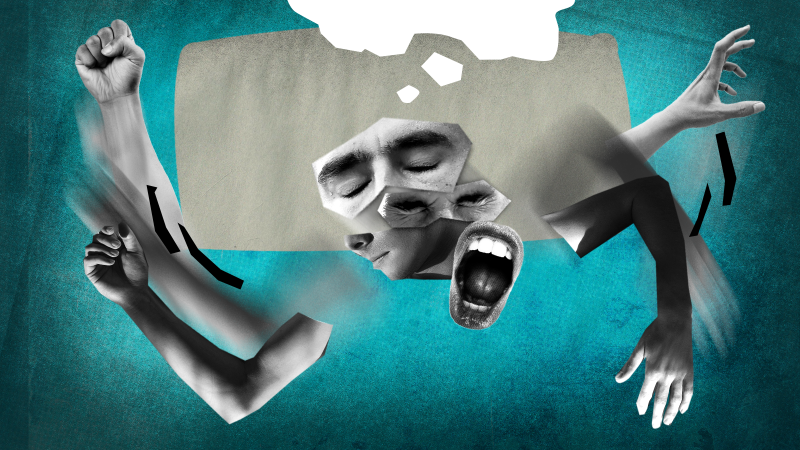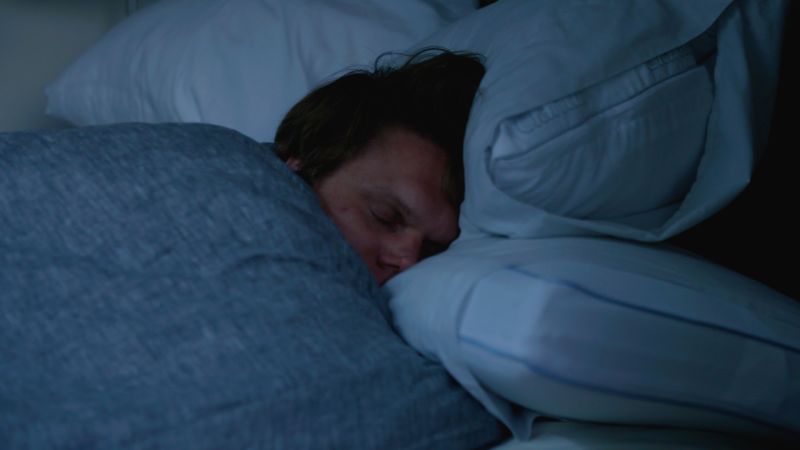He was the first person to be diagnosed with a new sleep disorder. It led to a scientific breakthrough

Donald Dorff could hear the crowd roaring as he snatched the quarterback’s pitch from the air and sprinted toward the goal line.
“There was a 280-pound tackle waiting for me, so I decided to give him my shoulder,” the 67-year-old told National Geographic magazine in 1987.
“When I came to, I was on the floor in my bedroom,” Dorff said. “I had smashed into the dresser and knocked everything off it and broke the mirror and just made one heck of a mess. It was 1:30 a.m.”
How did a dream from a retired grocery manufacturer from Golden Valley, Minnesota, become worthy of a profile in a well-known national magazine?
Five years earlier, Dorff had become the first patient diagnosed with an unusual disease called rapid eye movement sleep behavior disorder, or RBD.
There’s more. Dorff’s case also launched researchers on a journey that uncovered one of the earliest signs of two devastating diseases: Parkinson’s and a unique form of dementia called Lewy body.
Symptoms include screaming, kicking and throwing punches
The discovery of RBD was made in 1982 when Dorff, after years of experiencing “violent moving nightmares,” became a patient of psychiatrist and sleep specialist Dr. Carlos Schenck, then working at the Minnesota Regional Sleep Disorders Center in Minneapolis.
“But Dorff was able to get up and hurt himself while dreaming, a very odd behavior. We were scratching our heads about it,” he said. “Then we put him in a sleep lab, and lo and behold, all his physical behaviors came out of REM sleep, which had never been reported before.”
More patients with the unusual disorder were identified, many exhibiting a disturbing set of violent symptoms, Schenck said.
“They start kicking in bed, throwing punches at their bed partners, talking or screaming loudly, things like ‘Get the hell out of here!’ Then the wife has to scream really loudly to stop the episode,” he said.
“Limb jerking, twitching, throwing out your arm, throwing punches, kicking, sitting up, standing, jumping out of bed and running. Those behaviors are very typical with RBD,” he added.
One 70-year-old patient, described by his wife as having a gentle nature during the day, would punch and kick her as many as five times a night, Schenck said. On one occasion, he tried to strangle his wife while dreaming of fighting off a mauling bear.
Another patient, also 70, dreamed he had just taken down a deer and was going to break its neck. In reality it was his wife’s neck, which he discovered when he woke up. (She quit sleeping in the same bed.)
By 1986, Schenck and his team had published their first paper on the newly discovered sleep disorder.
As he followed patients over the years, however, Schenck discovered something more disturbing — the behavior could be a “canary in the mine” for later neurodegeneration.
“Losing the paralysis of REM sleep that is the basis of RBD is the earliest and strongest predictor of a later diagnosis of Parkinson’s disease and dementia with Lewy body,” Schenck said.
RBD can affect women, too
Lewy body dementia can refer to two different types of dementia: Parkinson’s disease dementia and dementia with Lewy bodies, which both affect cognition.
Parkinson’s disease, however, is a slowly progressive disorder that inhibits muscle control, balance and movement — although about 4 in 5 people with Parkinson’s ultimately develop dementia, according to Johns Hopkins Medicine.
In both Parkinson’s and the two dementias, cells in and around the stalk-like stem at the bottom of the brain begin to die. In addition to breathing, swallowing, heart rate and eye and facial movements, the brain stem also controls the sleep-wake cycle.
Early damage to the brain stem caused by Parkinson’s can interfere with the body’s innate ability to freeze the muscles while dreaming, thus allowing the body to sit up, scream, flail or otherwise act out a dream.
Hallucinations, which are common in Parkinson’s, can also occur, according to case studies. A 67-year-old man would see faceless, hooded or cloaked figures or animals while awake during the night. The images vanished when the man turned on a light or got up to investigate.
Such nighttime behaviors can often be controlled with medication, including high doses of melatonin or the drug clonazepam, which stops seizures and relaxes tense muscles, Schenck said.
“Either one alone or both in combination works 80% to 90% of the time, and there are a long list of alternative treatments,” said Schenck, who first published the connection between RBD and Parkinson’s in February 1996.
“We know the mechanism for RBD very well, and we know how to treat it,” he said. “The next step is to slow down or halt the progression to Parkinson’s disease and dementia with Lewy bodies.”
At first, researchers believed RBD only affected men but then realized that women are equally impacted.
“Just as many women have this problem, but because it’s much milder and doesn’t cause injury as often, they frequently don’t come in to seek help,” Schenck said. “Yet they have lost that muscle paralysis in REM sleep, and they’re just as much at risk for future Parkinson’s disease as the men.”
A clinical trial is underway at nine medical centers in the United States, Schenck said. Called the North American Prodromal Synucleinopathy Consortium, the research hopes to identify potential treatments for rapid eye movement sleep behavior disorder and slow its progression into Parkinson’s and dementia.
Seek medical treatment if violent dreams begin
As a child, Donald Dorff shared a room with three brothers and never had any signs of a sleep disorder. On his wedding night, however, he scared his new bride with loud talking, groaning, teeth grinding and minor movements, according to Schenck’s case study.
About 41 years later, however, he began to have vivid, violent dreams that he would act out. In one dream, he was riding a motorcycle when another motorcyclist tried to ram him.
“I decided I’m going to kick his motorcycle away and at that point my wife woke me up and said, ‘What in heavens are you doing to me?’ because I was kicking the hell out of her,” Dorff told Schenck during treatment.
In another dream Dorff was under attack by a man with a rifle and preparing to shoot back when he suddenly woke up. “I was kneeling alongside the bed with my arms extended like 1 was holding the rifle up and ready to shoot.”
One night Dorff dived into a bedside dresser and cut himself, Schenck said. It was then that he found Schenck’s clinic and went there for treatment.
While some people with RBD develop full-blown Parkinson’s rather quickly, Dorff was not one of them. He died of prostate cancer, Schenck said, and was able to control his violent nighttime behavior until his death as long as he remained on medication.
Dorff’s case helped physicians discover an early key to two devastating disorders, allowing earlier diagnosis and treatment.
“If you’ve never been a sleepwalker or sleep talker throughout your life and suddenly, after the age of 50, you start and the talking becomes louder and more frequent, then you really should be evaluated by your primary care doctor,” Schenck said.
“Your doctor should consider neurological evaluation because that could be the first sign of a neurodegenerative disorder.”






